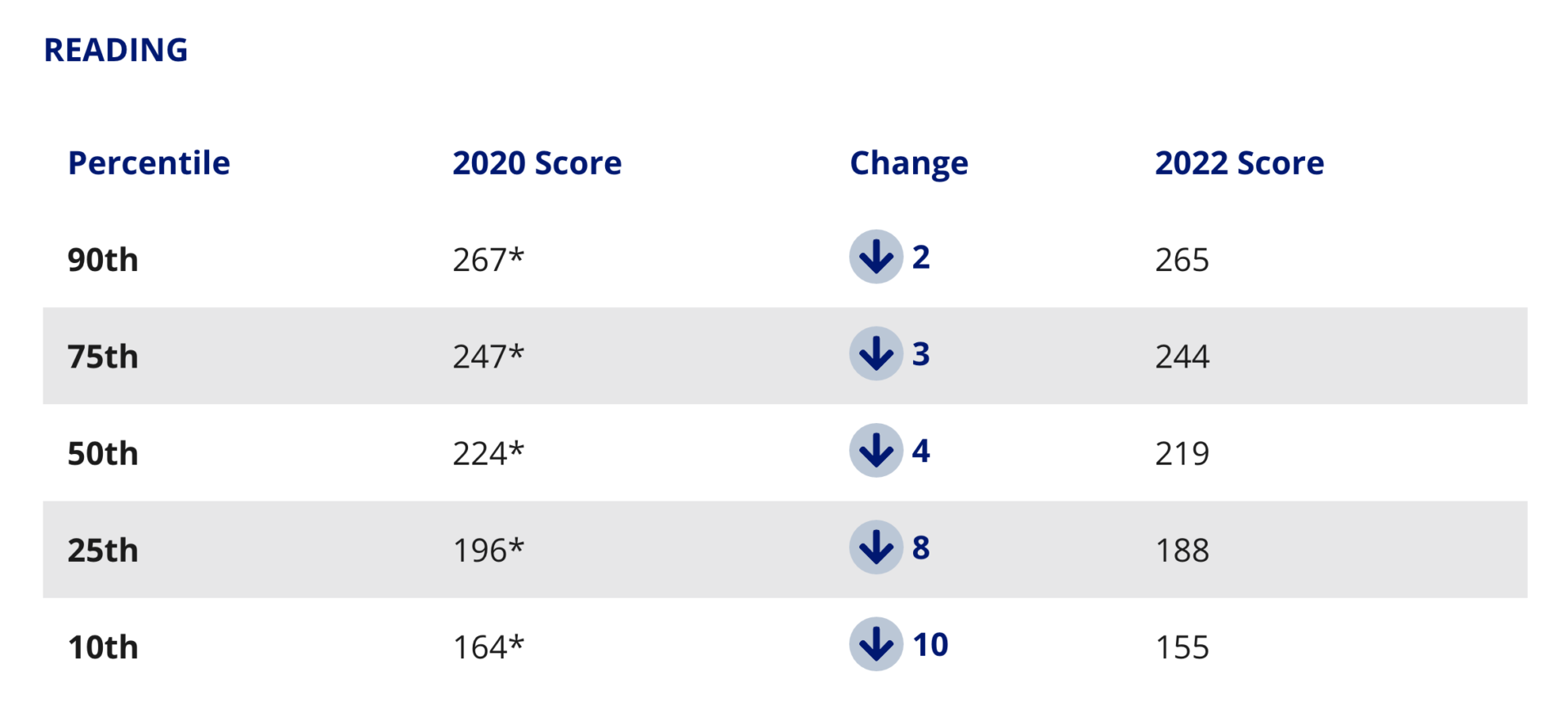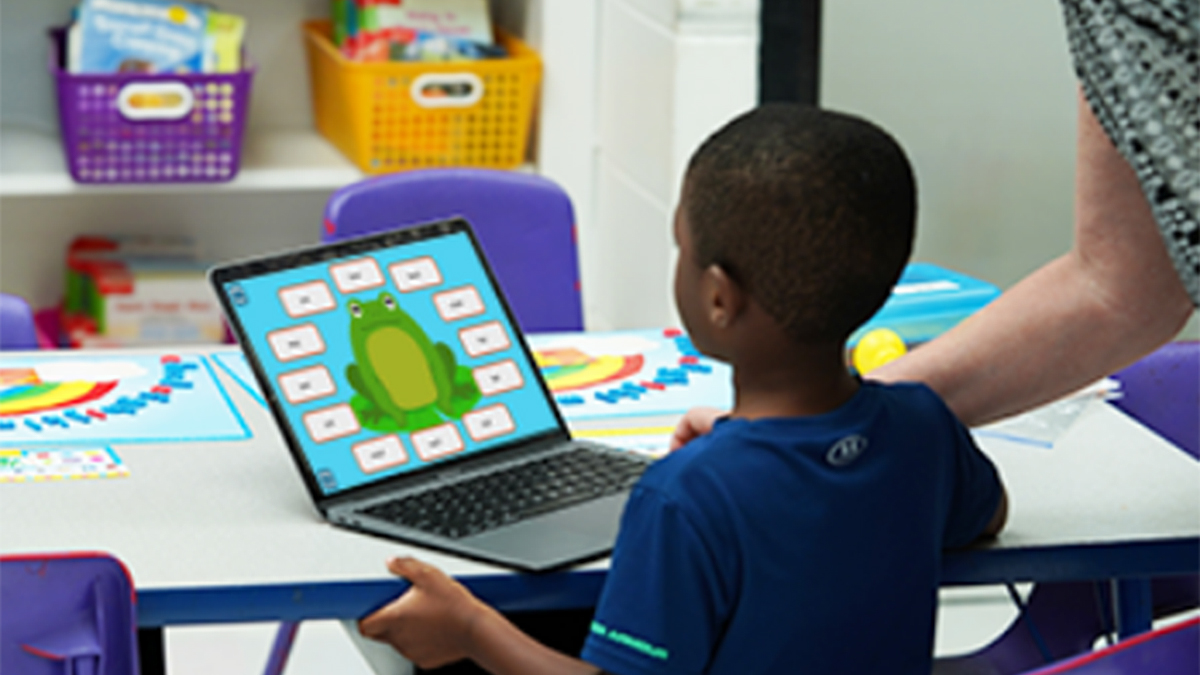NAEP decline in reading scores and how voice-enabled learning can help
September 8, 2022

Students reading scores plummet: Latest NAEP results
The results of the 2022 National Assessment of Educational Progress (NAEP) long-term trend test make it official: student reading scores have declined by the largest margin in 30 years.
This year’s test was given to a representative sample of 14,800 9-year-olds (in third and fourth grades) across the US.
At the national level, average reading scores dropped by 5 points compared to the 2020 test (administered just before the pandemic forced schools to close), the biggest drop since 1990.

Students of all races, across all regions of the country, saw declines in their reading scores. However, students who were the furthest behind before the pandemic saw the sharpest decline: students in the bottom 10th percentile dropped 10 points, compared to a 2 point drop for students in the 90th percentile.

As New York Times reporter Sarah Mervosh explains in her coverage, the NAEP is considered a gold standard in testing. It’s standardized across the country, and student achievement scores can be compared across decades since the test remains very similar to the first one administered in 1970.
Without a doubt, “this year’s results are sobering,” comments Peggy G. Carr, Commissioner of the National Center for Education Statistics (NCES), which conducts the NAEP.
More reading intervention is needed
Prior to the release of the 2022 NAEP results, education experts have been calling for large-scale interventions and “high-dosage” tutoring to bring students back on track for learning to read.
As Emily Hanford, senior education correspondent for American Public Media, says in her recent NYT piece, “There’s increasing awareness that many children are struggling because they’re not getting the instruction they need.” She goes on to explain how a lack of instruction in school means parents must fill the void, “exacerbating inequality in an already unequal education system.”
Dr. Martin West, Professor at the Harvard Graduate School of Education and member of the National Assessment Governing Board, also believes that underachieving readers need more practice and instruction: “I don’t see a silver bullet beyond finding a way to increase instructional time.”
There’s increasing awareness that many children are struggling because they’re not getting the instruction they need.
Emily Hanford, Senior Education Correspondent, American Public Media
Increasing instructional time with voice-enabled tools
It’s true: there is no silver bullet. But voice-enabled reading tools can answer one of the clarion calls being made to stem the decline in reading scores — instruction time.
Teachers don’t have the time to offer one-on-one reading instruction to individual students every day in the classroom, and as Bethlam Forsa, CEO of Savvas Learning Company says, “A one-size-fits-all instructional approach doesn’t work in a classroom where every student brings their own unique learning style.”
Enter voice-enabled reading tools that allow kids to practice reading aloud independently and at their own pace while delivering real-time and actionable feedback to teachers on their reading progress.
Learning Without Tears leverages speech tech
Early childhood learning company Learning Without Tears is the latest education leader to power their voice-enabled learning tools using our speech technology. The result? Teachers have more time for classroom instruction and the data they need to see where lower-performing students need extra help in order to develop reading fluency.
Announcing the launch of their new K-3 voice-enabled Phonics, Reading, and Me product in a recent press release, CEO Terry Nealon says: “Teachers have more work to do with more students than ever before, but they also lack the resources and time to allow them to assess, monitor, and individualized reading instruction based on a clear understanding of each student’s needs and progress.”

Want to learn more about how speech technology can stem reading loss?
Reading is the gateway to learning, and SoapBox Labs is committed to tackling the decline in global literacy rates with speech technology that listens while kids read aloud, sharing accurate and unbiased feedback on their progress, from phonics all the way to reading fluency.
In addition to Learning Without Tears, SoapBox powers learning tools for other leading education companies like McGraw Hill, Imagine Learning, and Amplify bringing voice-enabled reading programs to teachers and students across the US.
Dive into our resources to learn more about how to power your voice-enabled learning tools using our speech technology. Ready now? Let’s Get Started!




